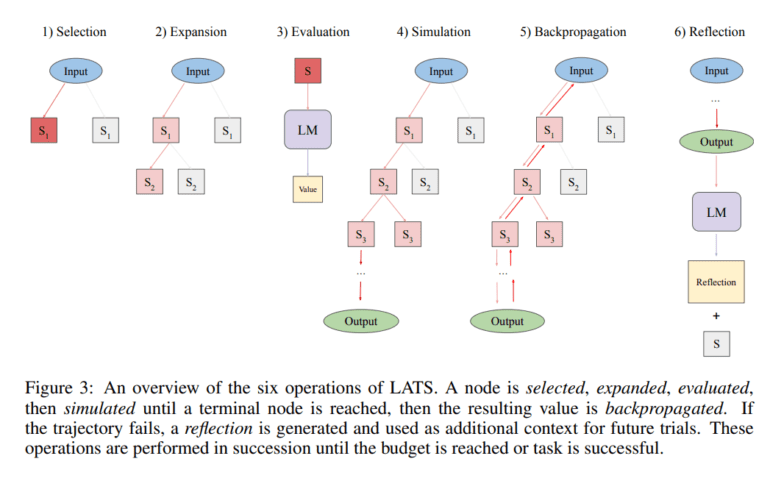TL;DR:
- LATS, an innovative framework by University of Illinois researchers, enhances Large Language Models (LLMs) for decision-making.
- LLMs excel in breaking down complex problems but struggle with dynamic environments.
- LATS utilizes Monte Carlo tree search (MCTS) and external feedback to improve LLMs’ decision-making capabilities.
- Experimental evaluations showcase LATS’s success in programming and web browsing tasks.
- LATS offers promise for autonomous decision-making without additional training.
Main AI News:
Can Large Language Models Truly Act and Reason? Researchers from the University of Illinois at Urbana-Champaign Introduce LATS for Enhanced Decision-Making
In the ever-evolving landscape of artificial intelligence, Large Language Models (LLMs) have emerged as indispensable assets in the realm of reasoning and decision-making. These digital intellects possess a unique aptitude for dissecting intricate problems into a sequence of logical steps. However, as with any innovation, there is room for refinement. Enter LATS, the pioneering framework developed by researchers from the University of Illinois at Urbana-Champaign, poised to revolutionize LLMs’ decision-making prowess.
LLMs have undeniably left their mark on the world of artificial intelligence. Their remarkable capacity for processing natural language and navigating complex environments has reshaped the field. Yet, their potential for thoughtful decision-making has often fallen short of expectations. Traditional reinforcement learning has long held the spotlight, but LLMs offer a compelling alternative.
LATS, short for Large Language Models for Autonomous Task Solving, represents a paradigm shift. This innovative framework harnesses the full spectrum of LLM capabilities, transforming them into agents, value functions, and optimizers. LATS employs sophisticated techniques, including Monte Carlo tree search (MCTS), to chart diverse decision paths. It also integrates external feedback, elevating the adaptive problem-solving capabilities of LLMs to unprecedented heights.
Experimental evaluations of LATS across a range of domains, from programming to web browsing, paint a compelling picture of its effectiveness. In the realm of programming, LATS achieved a remarkable success rate of 94.4% on HumanEval when paired with GPT-4. Meanwhile, in the dynamic realm of web browsing, it secured an impressive average score of 75.9 with GPT-3.5, showcasing its versatility and broad applicability.
LATS, with its ability to adapt, explore, and exploit alternatives, has earned its stripes as a promising framework for autonomous decision-making with LLMs. It represents a significant stride towards unlocking the full potential of these digital intellects without the need for additional training.
While this research heralds the arrival of LATS as a formidable ally in the quest for autonomous reasoning and decision-making, it is important to note that further exploration is warranted. As with any innovation, potential limitations and avenues for improvement deserve careful consideration. In time, LATS may very well be the cornerstone of a new era in the development of versatile, generalist agents.
Conclusion:
The introduction of LATS signifies advancement in the AI market. This framework unlocks the untapped potential of Large Language Models, expanding their role in autonomous decision-making across various domains. LATS’s adaptability and effectiveness position it as a catalyst for the development of versatile AI agents, offering new opportunities and solutions in the AI landscape. Businesses and industries should closely monitor the evolution of LATS, as it has the potential to reshape the market by addressing the limitations of LLMs in decision-making tasks.

